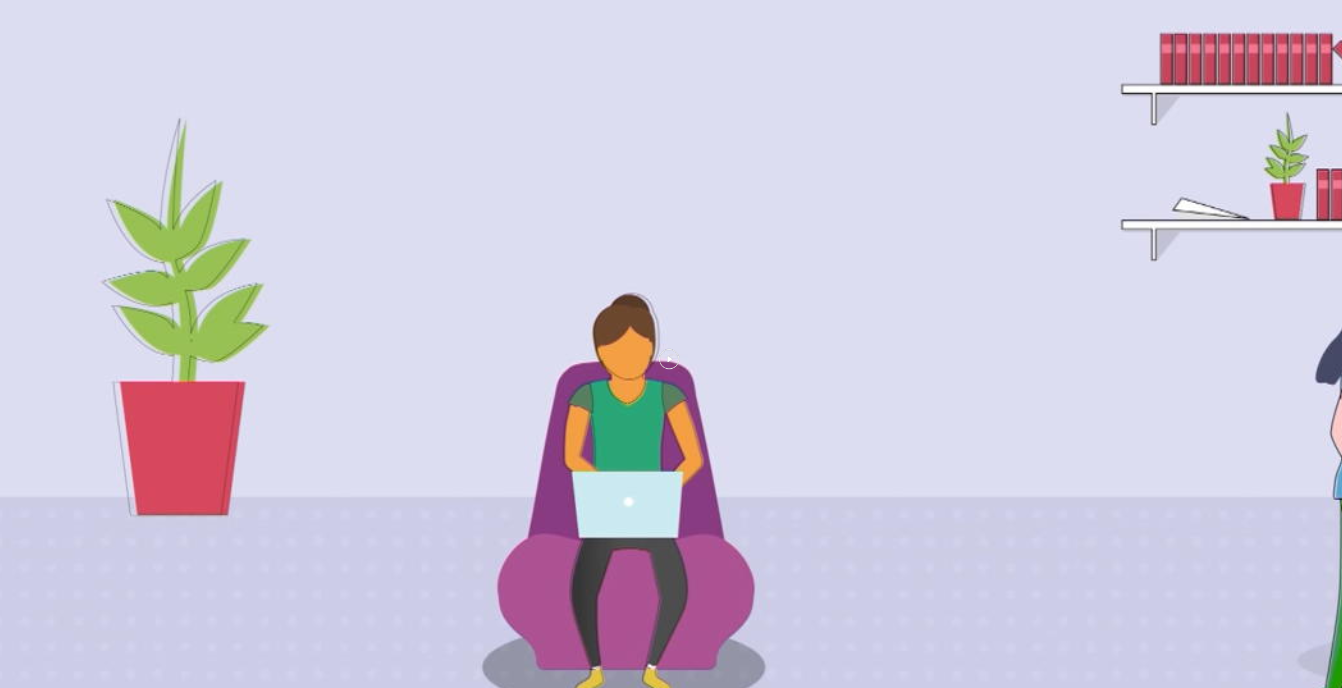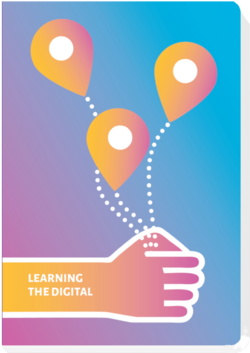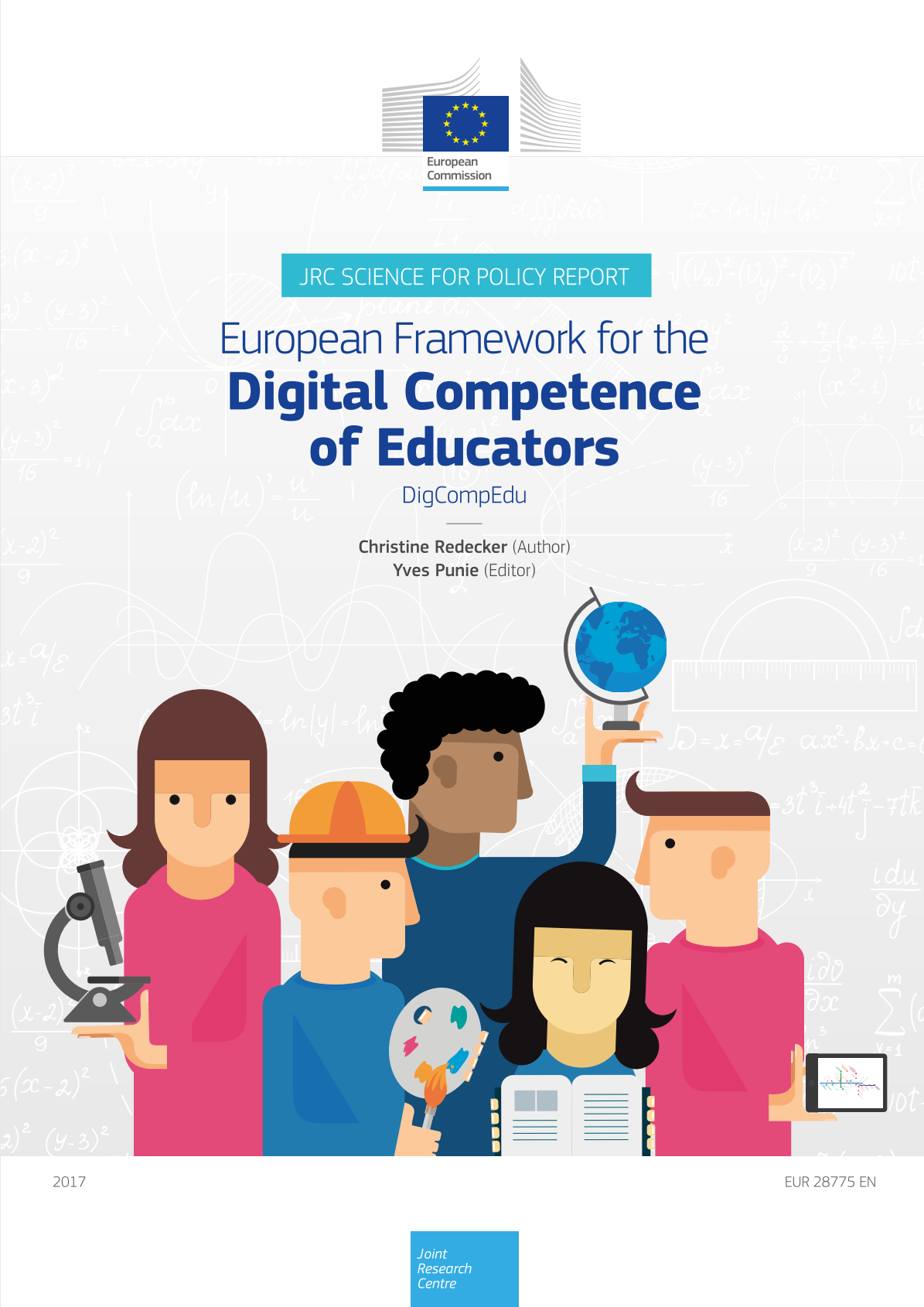The DigComp model has its roots in the research activity that the Joint Research Centre of the European Commission (JRC) started in 2005 to support policy-making regarding the potential of digital technologies in certain priority fields: education, the world of work, personal growth and social inclusion. For each competence, eight levels of proficiency are identified, ranging from “basic” to “highly specialised” according to three criteria: the complexity of the tasks, the autonomy required and the cognitive domain involved.
It brings a useful perspective for planning in the field of education, training and employment – most technical/digital skills and for digital competences assessment and certification. The framework has been progressively refined; an update of the framework is expected to be released in the first part of 2022.
Contents
Download DigComp
European Commission, Joint Research Centre, Vuorikari, R., Kluzer, S., Punie, Y. (2022). DigComp 2.2, The Digital Competence framework for citizens]. With new examples of knowledge, skills and attitudes, Publications Office of the European Union.
Evolution of DigComp
2013 DigComp focus: citizens [1]
2015 DigCompOrg: focus: educational organizations[2]
2016 DigComp 2.0 focus: citizens [3]
2017 DigComp 2.1 focus: citizens[4]
2017 DigCompEdu focus: educators – teachers and trainers[5]
2022 DigComp 2.2 focus: citizens[6]
What is DigComp?
The Competence Areas of DigComp 2.2
Explore the five areas:
Information and data literacy
1.1 Browsing, searching and filtering data, information and digital content
- To articulate information needs,
- to search for data, information and content in digital environments,
- to access them and to navigate between them.
- To create and update personal search strategies.
1.2 Evaluating data, information and digital content
- To analyse, compare and critically evaluate the credibility and reliability of sources of data, information and digital content.
- To analyse, interpret and critically evaluate the data, information and digital content
1.3 Managing data, information and digital content
- To organise, store and retrieve data, information, and content in digital environments.
- To organise and process them in a structured environment
Communication and Collaboration
2.1 Interacting through digital technologies
- To interact through a variety of digital technologies and to understand appropriate digital communication means for a given context
2.2 Sharing through digital technologies
- To share data, information and digital content with others through appropriate digital technologies.
- To act as an intermediary, to know about referencing and attribution practices.
2.3 Engaging in citizenship through digital technologies
- To participate in society through the use of public and private digital services.
- To seek opportunities for self-empowerment and for participatory citizenship through appropriate digital technologies.
2.4 Collaborating through digital technologies
- To use digital tools and technologies for collaborative processes, and for co-construction and co-creation of data, resources and knowledge
2.5 Netiquette
- To be aware of behavioural norms and know-how while using digital technologies and interacting in digital environments.
- To adapt communication strategies to the specific audience and
- to be aware of cultural and generational diversity in digital environments.
2.6 Managing digital identity
- To create, and manage one or multiple digital identities,
- to be able to protect one’s own reputation,
- to deal with the data that one produces through several digital tools, environments and services.
Digital Content Creation
3.1 Developing content
- To create and edit digital content
- to express oneself through digital means.
3.2 Integrating and re-elaborating digital content
- To modify, refine and integrate new information and content into an existing body of knowledge and resources to create new, original and relevant content and knowledge.
3.3 Copyright and licenses
- To understand how copyright and licences apply to digital information and content.
3.4 Programming
- To plan and develop a sequence of understandable instructions for a computing system to solve a given problem or to perform a specific task.
Safety
4.1 Protecting devices
- To protect devices and digital content, and to understand risks and threats in digital environments.
- To know about safety and security measures and to have a due regard to reliability and privacy.
4.2 Protecting personal data and privacy
- To protect personal data and privacy in digital environments.
- To understand how to use and share personally identifiable information while being able to protect oneself and others from damages.
- To understand that digital services use a “Privacy policy” to inform how personal data is used
4.3 Protecting health and well-being
- To be able to avoid health-risks and threats to physical and psychological well-being while using digital technologies.
- To be able to protect oneself and others from possible dangers in digital environments (e.g. cyber bullying).
- To be aware of digital technologies for social well-being and social inclusion.
4.4 Protecting the environment
- To be aware of the environmental impact of digital technologies and their use.
Problem Solving
5.1 Solving technical problems
- To identify technical problems when operating devices and using digital environments, and to solve them (from trouble-shooting to solving more complex problems).
5.2 Identifying needs and technological responses
- To assess needs and to identify, evaluate, select and use digital tools and possible technological responses and to solve them.
- To adjust and customise digital environments to personal needs (e.g. accessibility).
5.3 Creatively using digital technology
- To use digital tools and technologies to create knowledge and to innovate processes and products.
- To engage individually and collectively in cognitive processing to understand and resolve conceptual problems and problem situations in digital environments.
5.4 Identifying digital competence gaps
- To understand where one’s own digital competence needs to be improved or updated.
- To be able to support others with their digital competence development.
- To seek opportunities for self-development and to keep up-to-date with the digital evolution.
Source: Applied after: Joint Research centre/EU Commission
Although the areas of competences are very useful for assessing the level of basic skills with respect to the use of digital tools (especially in terms of comparison between different countries, and age groups, gender, etc.), it only covers the social, political or cultural dimension of digitalisation to a limited extent. These aspects, which are important in democracy-related education, are additionally described in other competence frameworks, such as digital citizenship education. Conversely, models of civic competences are usefully expanded by DigComp.
Accompanying Tools and Material
- European Framework for the Digital Competence of Educators: DigCompEdu
- Assessment tool for schools: SELFIE
- DigComp Self-Assessment Tool (based on version 2.1): DigCompSat
References
- ↑ Punie, Y. and Brecko, B., editor(s), Ferrari, A., DIGCOMP: A Framework for Developing and Understanding Digital Competence in Europe. , EUR 26035, Publications Office of the European Union, Luxembourg, 2013, ISBN 978-92-79-31465-0, https://doi.org/10.2788/52966, JRC83167.
- ↑ Kampylis, P., Punie, Y. and Devine, J. (2015). Promoting Effective Digital-Age Learning: A European Framework for Digitally-Competent Educational Organisations, EUR 27599 EN, Publications Office of the European Union, Luxembourg, 2015, ISBN 978-92-79-54005-9, https://doi.org/10.2791/54070, JRC98209.
- ↑ Vuorikari R, Punie Y, Carretero Gomez S and Van Den Brande G. (2016). DigComp 2.0: The Digital Competence Framework for Citizens. Update Phase 1: the Conceptual Reference Model. EUR 27948 EN. Luxembourg (Luxembourg): Publications Office of the European Union; 2016. https://doi.org/10.2791/607218 JRC101254
- ↑ European Commission/Joint Research Centre: Stephanie Carretero Gomez, Riina Vuorikari, Yves Punie: DigComp 2.1: The Digital Competence Framework for Citizens with eight proficiency levels and examples of use
- ↑ DigCompEdu.Punie, Y. (ed). EUR 28775 EN. Publications Office of the European Union, Luxembourg, 2017, ISBN 978-92-79-73494-6, https://doi.org/10.2760/159770, JRC10
- ↑ Vuorikari, R., Kluzer, S. and Punie, Y., DigComp 2.2: The Digital Competence Framework for Citizens, EUR 31006 EN, Publications Office of the European Union, Luxembourg, 2022, ISBN 978-92-76-48882-8, https://doi.org/10.2760/115376, JRC128415
Elisa Rapetti
Researcher in Sociology. PhD in Methodology of Social Research and Applied Sociology at University of Milano. Facilitator at Democracy and Human Right Education in Europe (DARE).
Marco Oberosler
Works as expert for global competences at the International Cooperation Centre in Trento (Italy). Board member at DARE Democracy and Human Rights Education in Europe 2019-2021 and co-editor of the handbook Learning the Digital.
Nils-Eyk Zimmermann
Editor of Competendo. He writes and works on the topics: active citizenship, civil society, digital transformation, non-formal and lifelong learning, capacity building. Coordinator of European projects, in example DIGIT-AL Digital Transformation in Adult Learning for Active Citizenship, DARE network.
Blogs here: Blog: Civil Resilience.
Email: nils.zimmermann@dare-network.eu
handbook for Facilitators: Learning the Digital
This text was published in: M. Oberosler (ed.), E. Rapetti (ed.), N. Zimmermann (ed.), G. Pirker, I. Carvalho, G. Briz, V. Vivona (2021/22). Learning the Digital. Competendo Handbook for Facilitators.
Created in the frame of the project DIGIT-AL - Digital Transformation Adult Learning for Active Citizenship.











